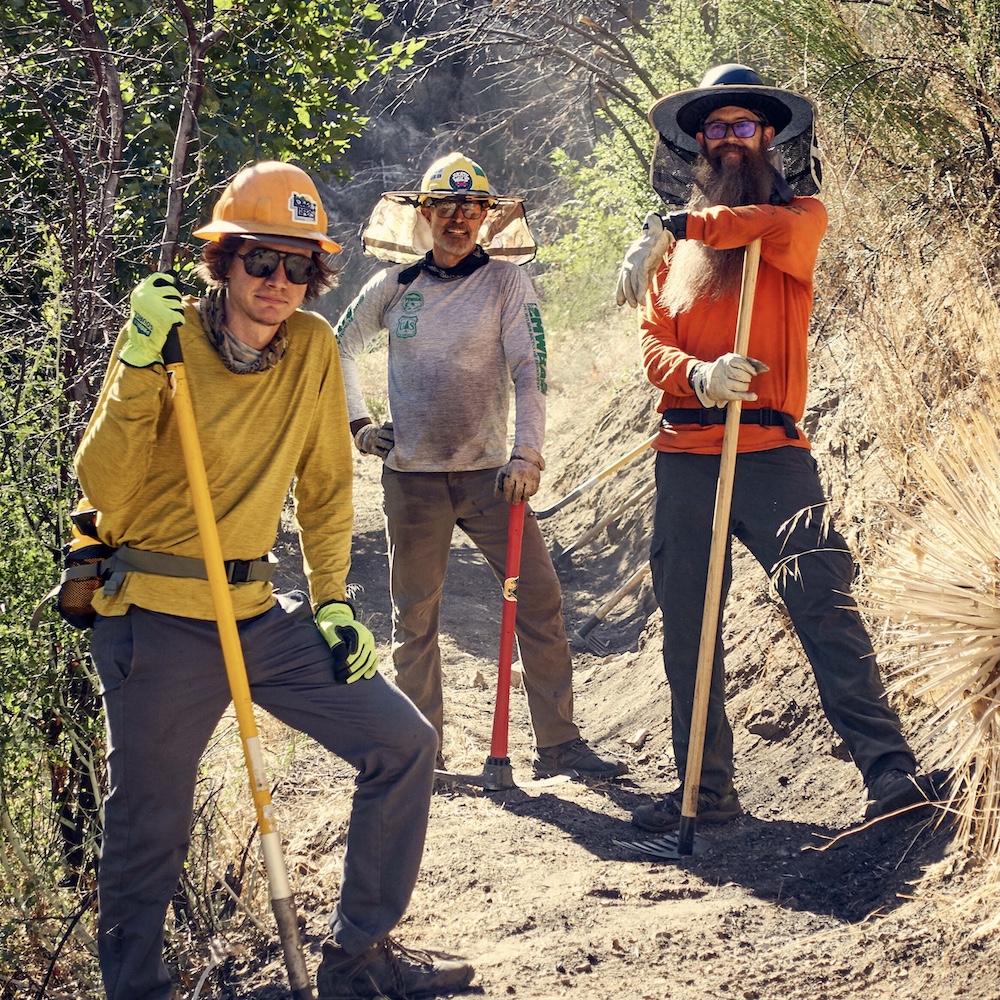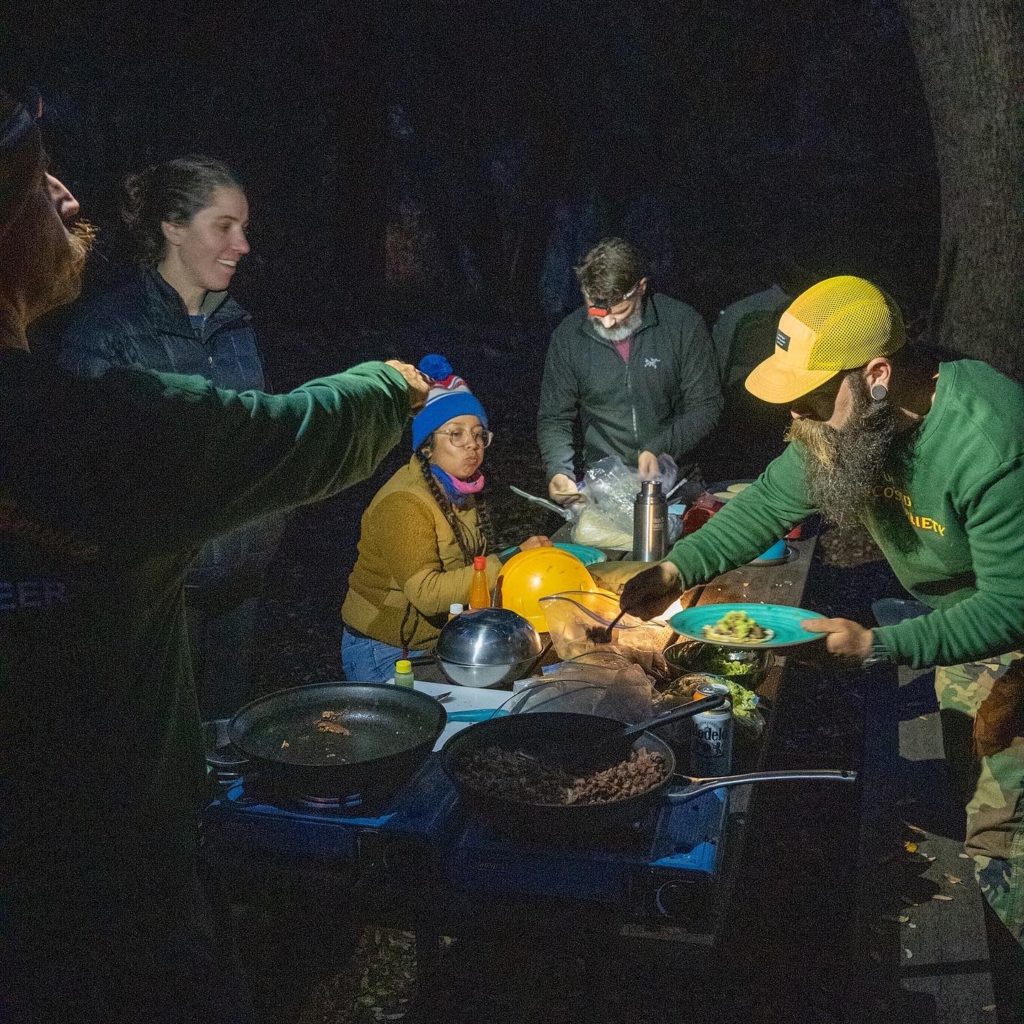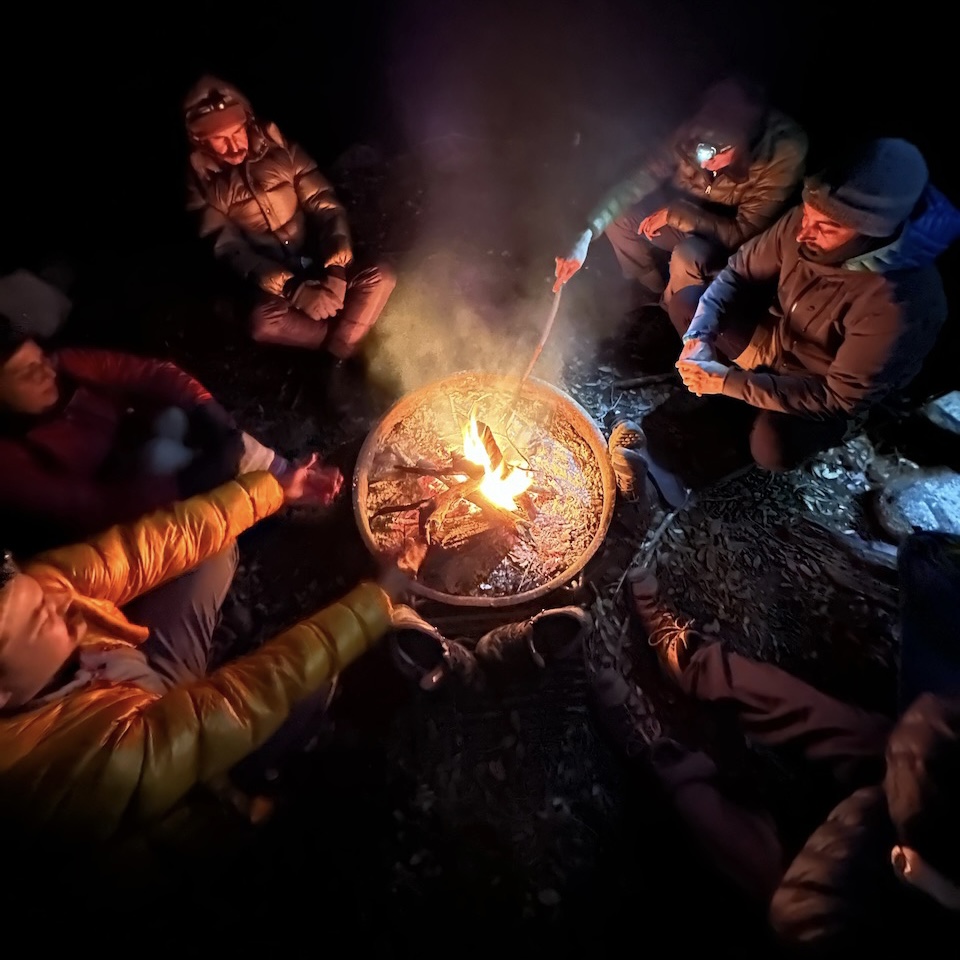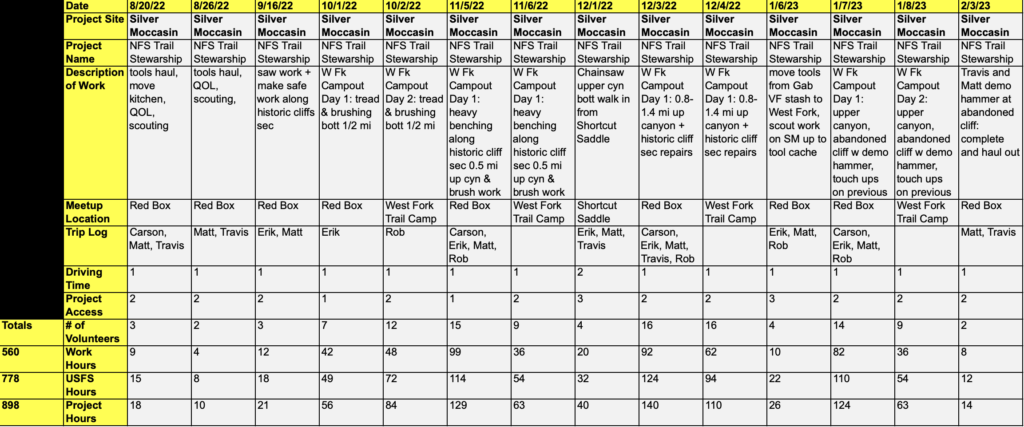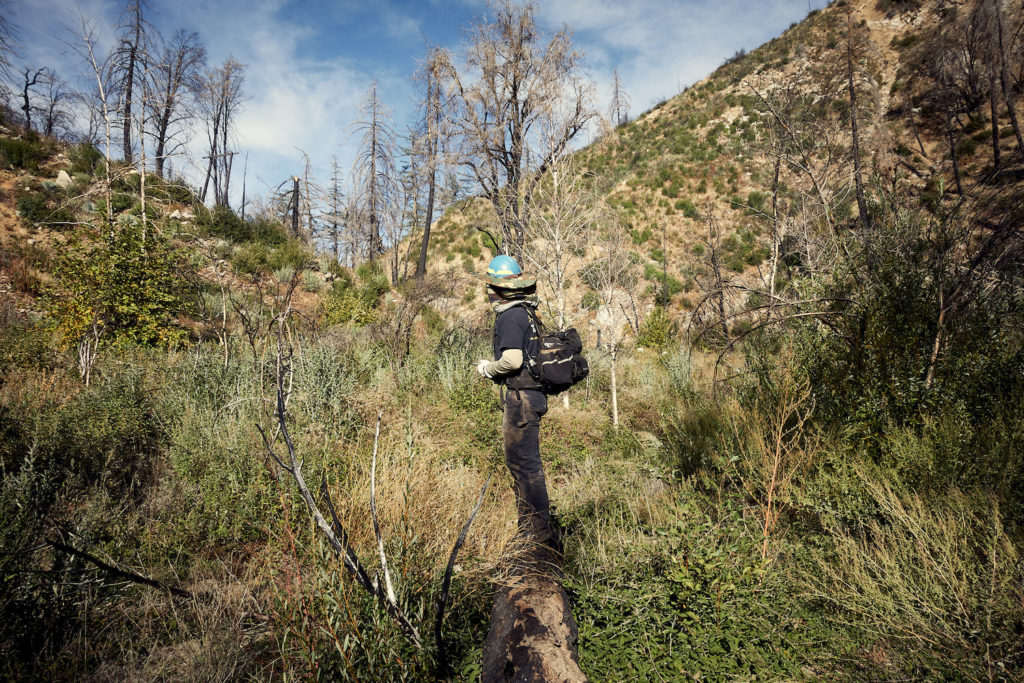
NWSA National Forest System Trail Stewardship Partner Funding: Project Narrative
Project description
Lowelifes was awarded this grant in 2022 for post-fire restoration of 11W06 Silver Moccasin National Recreation Trail “Shortcut Canyon” segment from Shortcut Saddle (4,800 ft) to West Fork Trail Camp (3,100 ft) in the San Gabriel Mountains National Monument, Angeles National Forest. The “Shortcut Canyon” segment is a roughly 3.5-mile segment of the 13.8-mile trail and is easily the most difficult segment to maintain. Nearly two miles of the trail is at the bottom of the very dynamic 2,500-foot-deep Shortcut Canyon. Shaped by seismic activity, the geologically intriguing canyon is at the bottom of numerous drainages decimated by the 2020 Bobcat Fire. This is where the majority of our work was focused. Our project milestone was restoring an old segment of trail along a cliff that was abandoned many years prior to the 2020 Bobcat Fire.
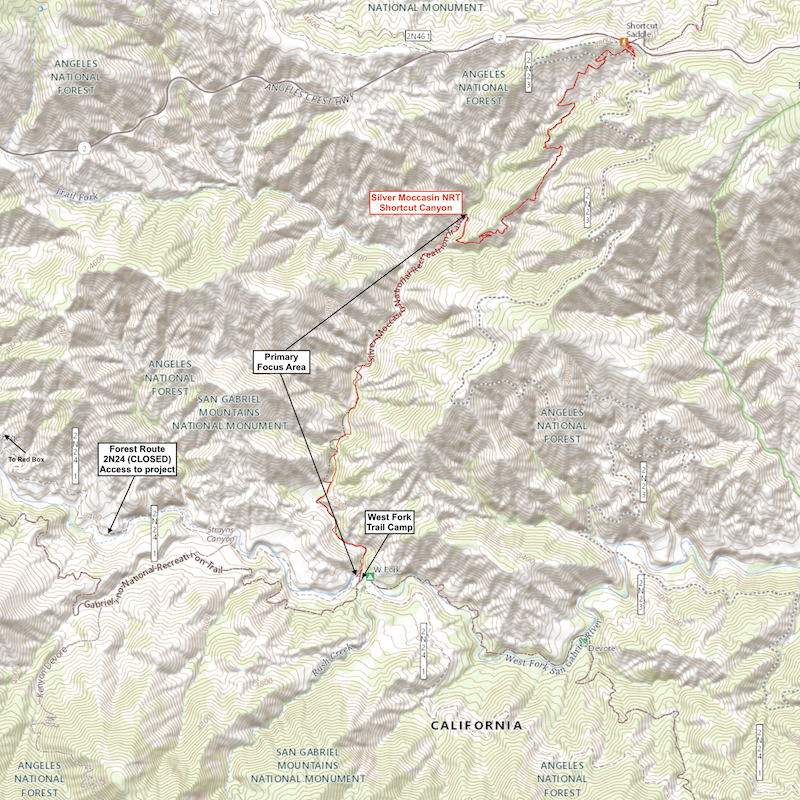
Project Access
We used the closed 2N24 “Rincon to Red Box Road” from the Red Box Picnic Area (4,600 ft) to access the project. After 5.5 miles and a few stream crossings, the road passes through West Fork Trail Camp (3,100 ft) which happens to be one of the ending termini of the Silver Moccasin NRT. Alongside the West Fork San Gabriel River, the trail camp is a perfect site to host weekend trail stewardship campouts to work on Silver Moccasin NRT. The trail camp was home to “Old Short Cut,” the first ranger station built with federal government funds for $75 in the year 1900. The foundation is still at the campground but the ranger station was moved to another site in the Angeles National Forest.

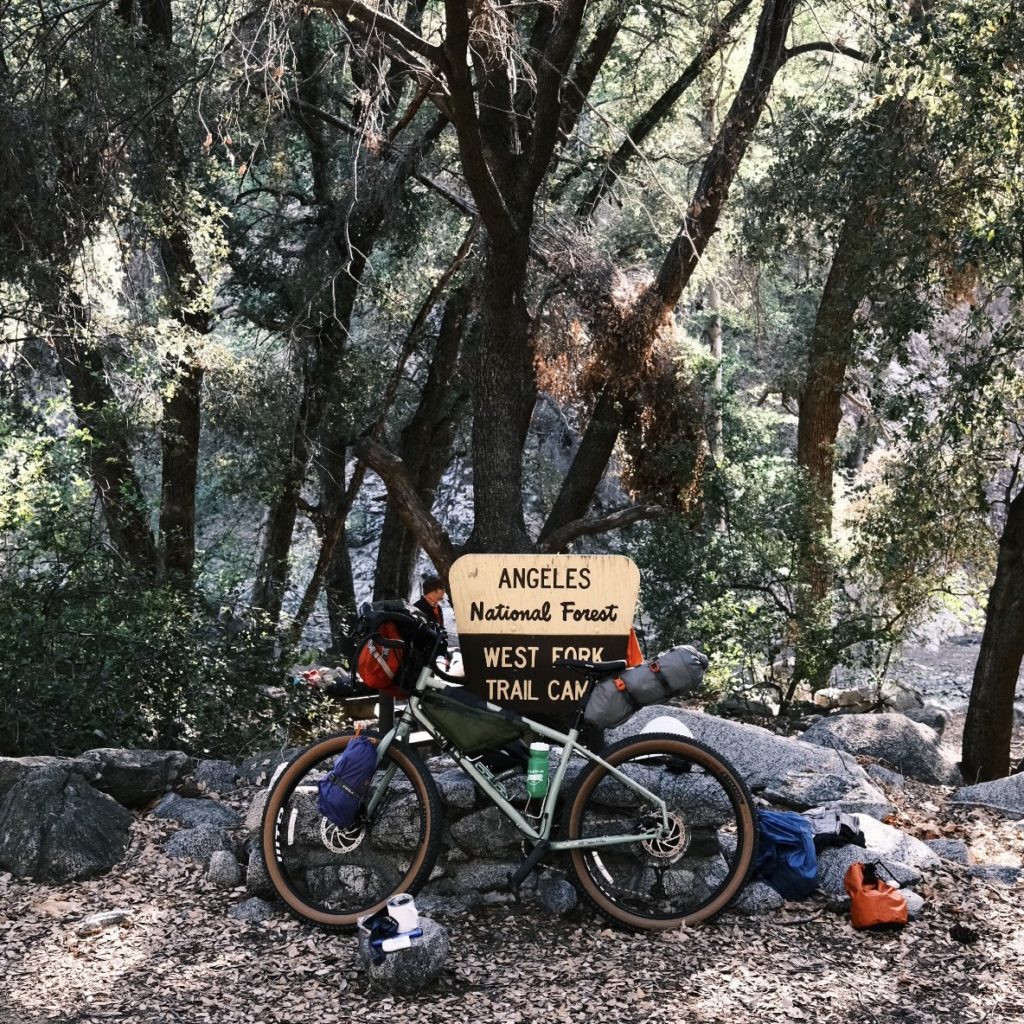
Work Plan and Execution
After scouting the project area, we realized we had a lot of work to do just to make the trail discernable to volunteers. We started by doing essential brushing and flagging the trail. Then we immediately followed up with chainsaw work to remove down trees and using hoes to remove large swaths of toxic poodle-dog bush. After three strike missions in August and September, we had the trail ready for volunteers and a plan in place to tackle the 2-mile canyon bottom section of the trail with four weekend campouts. Heavy erosion impacts at all of the stream crossings, bisecting drainages, and segments within the floodplain made this a challenging project. We focused our efforts on everything out of the path of major erosion and mitigated erosion issues where possible.
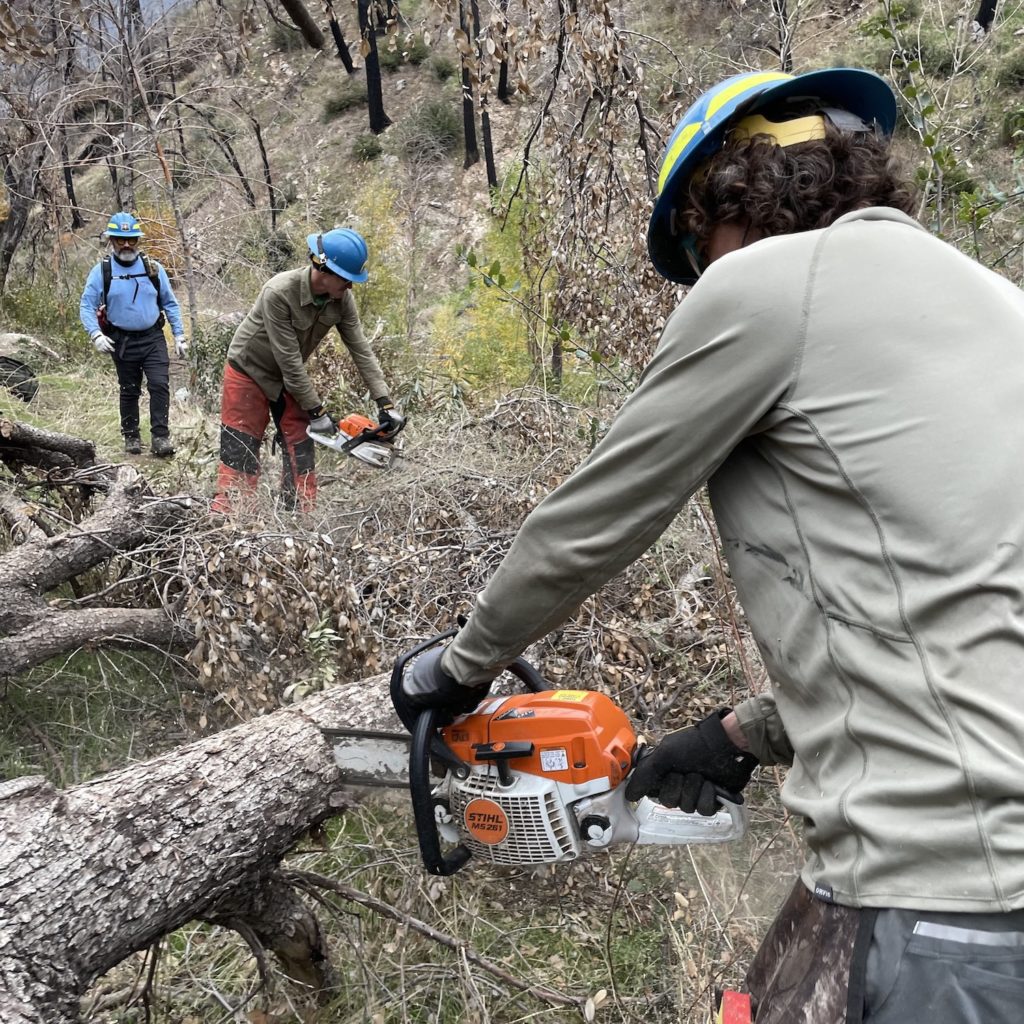

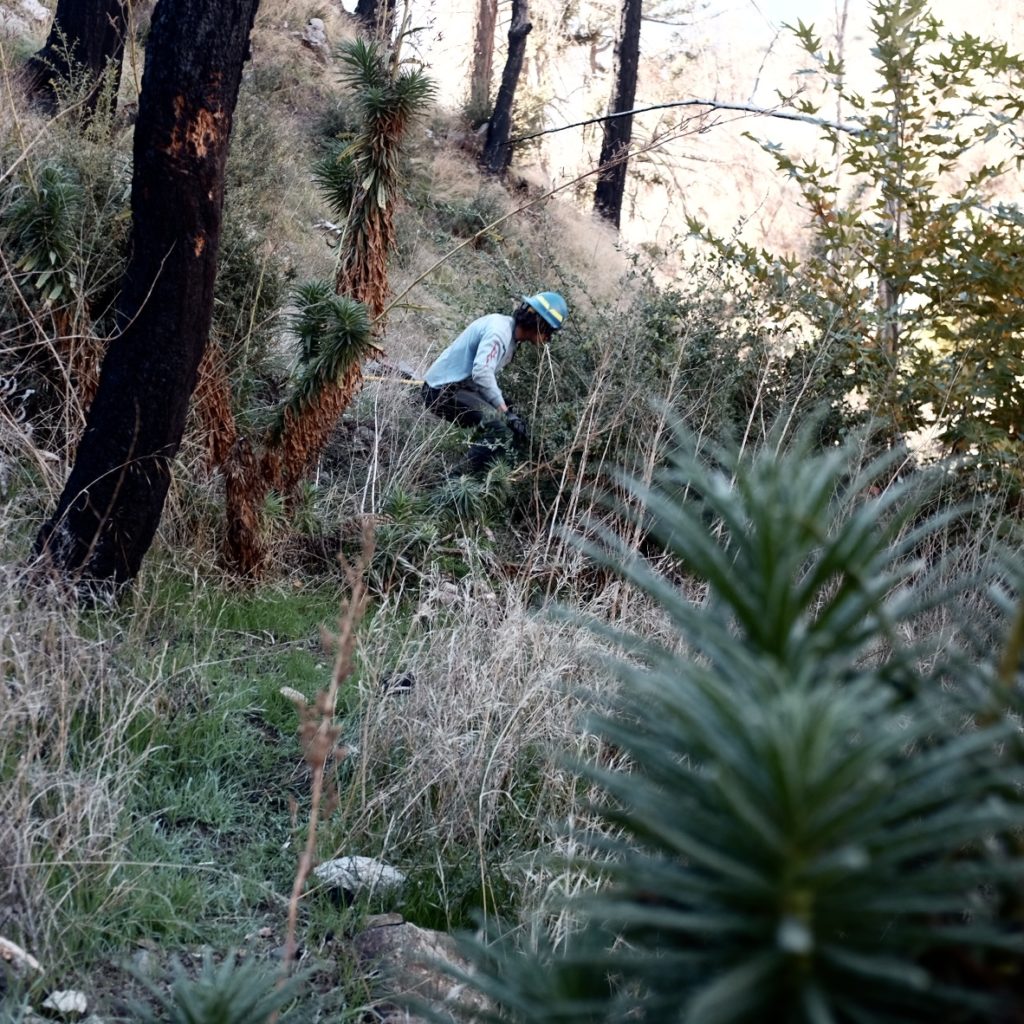
The biggest part of the project was restoring a roughly ¼-mile section of trail that had been abandoned. Over the years, users made a new path alongside the creek with a couple of extra stream crossings. It’s a beautiful section of trail contouring along a cliff above the stream. At certain times of the year, little waterfalls trickle down onto the trail making it very unique. This stretch traverses a cliff face that had eroded years ago when users abandoned it for obvious safety reasons. Prior to our work, it was impossible to pass without doing a very dangerous move on off-cambered rock roughly 30 feet above the rocky creek bottom. Besides the work on the rocky cliff face to make a safe passage, the section also needed a lot of tread restoration on either side of the cliff. With a couple of very rare healthy trees upslope of the project, we could safely set up a harness to work the cliff with power tools.
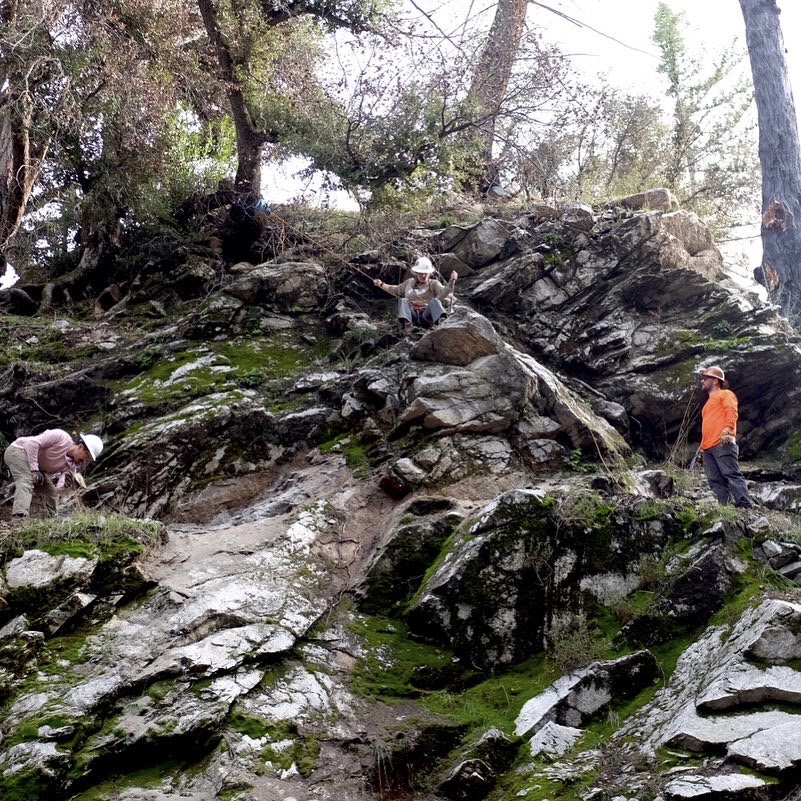

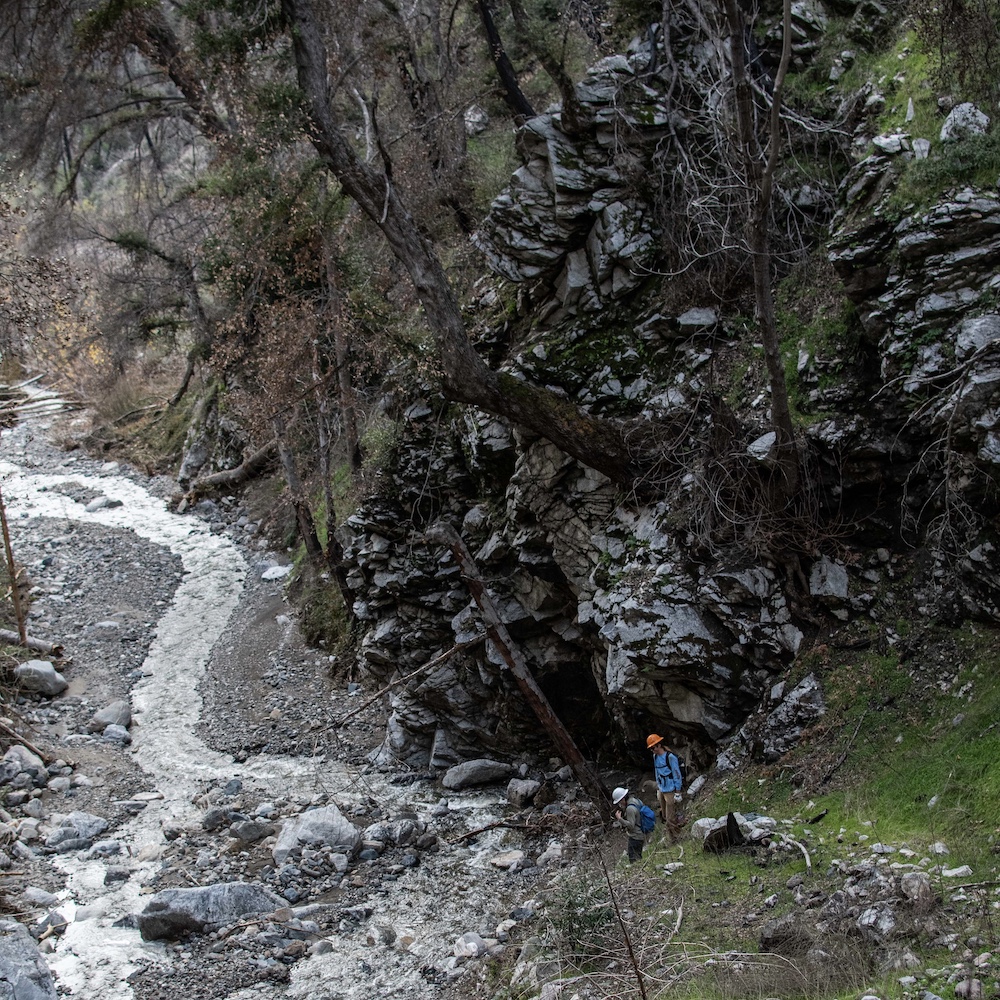
After hosting two campouts in October and November, we had made enough progress up the canyon that we needed to get in and clear the remainder of the downed trees. We have chainsaw use restrictions and have to follow PAL protocols and forecasts for each workday. We finally got a change in weather and PAL levels dropped on December 1st. We organized a strike mission with four sawyers and took care of the remainder of the down trees. The canyon was now ready for volunteers to come in and complete the project.

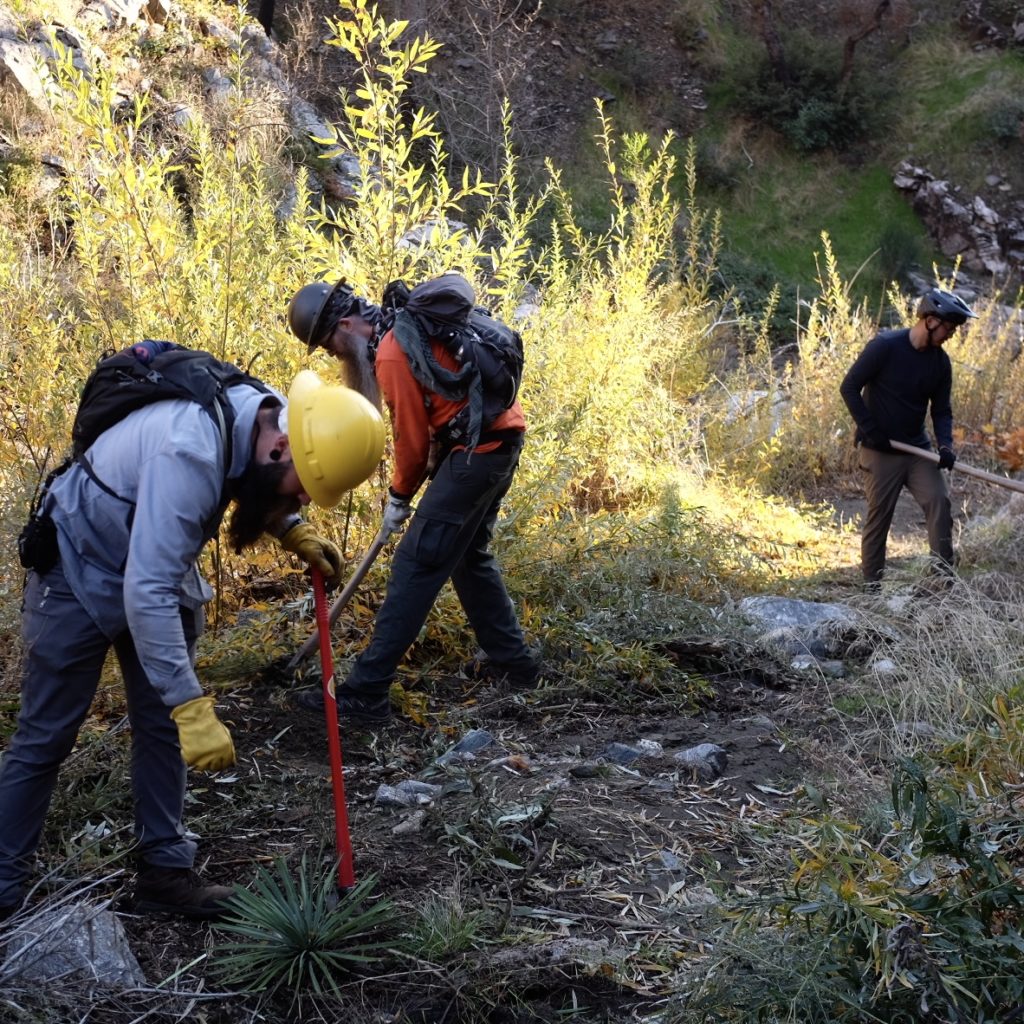
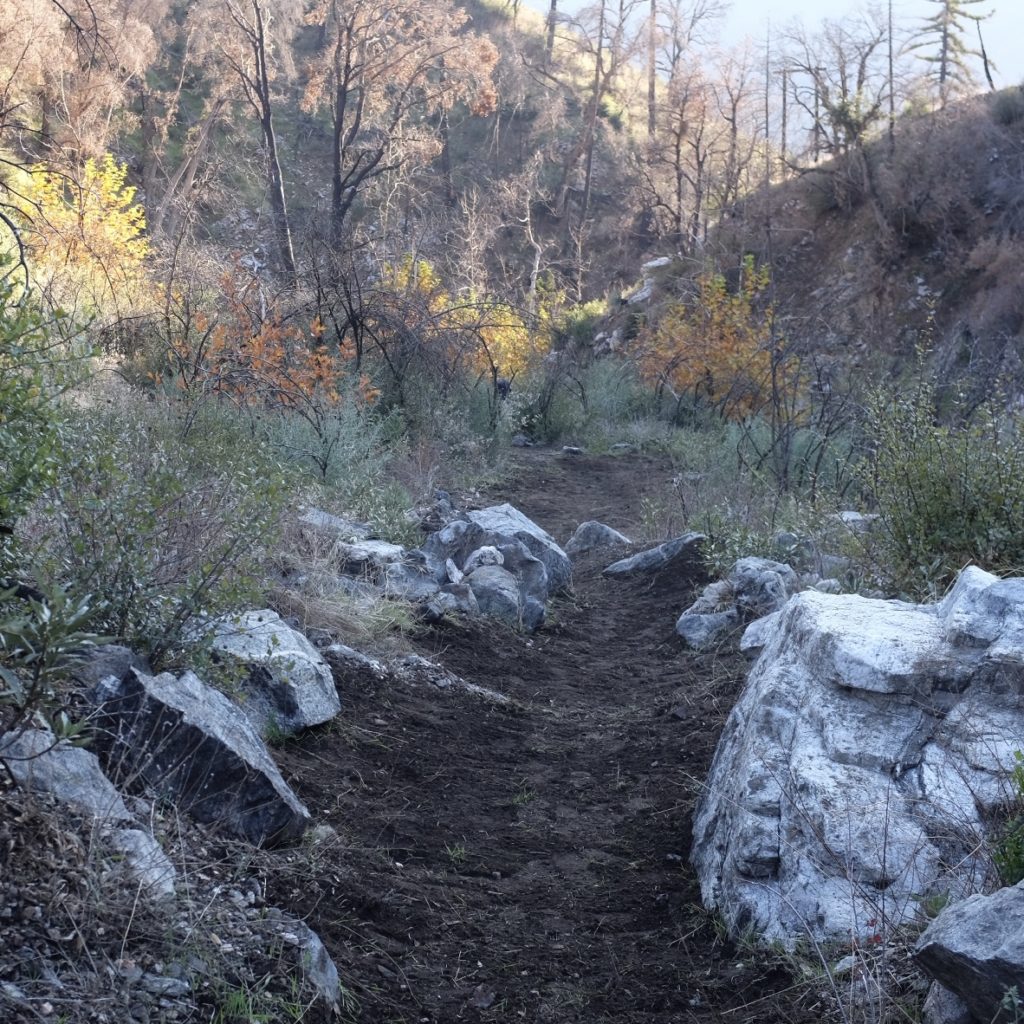
At our campout in December we focused on moving further up the canyon and beginning the tread restoration along the abandoned section. In between campouts, major winter storms that dropped ten inches of rain in 24 hours were undermining some of our work and heavily damaging the 2N24 access road. The large storms made access to our project difficult in January when we planned to move in nearly 70 pounds of tools to tackle the abandoned cliff. With four fast-moving water crossings of the West Fork San Gabriel River on 2N24 and four on Silver Moccasin NRT to access the abandoned cliff, the January campout was one for the books. Volunteers wore river sandals or sacrificial shoes to keep their work boots and socks dry for when we reached the work site. We managed to get all the tools into the site despite the difficult conditions. A crew of volunteers worked two miles up to the top of the canyon bottom while another crew tackled the big project on the abandoned cliff. We safely set up the harness and managed to get 50% of the abandoned cliff project completed. You could pass through more safely but it still needed another big day of work.
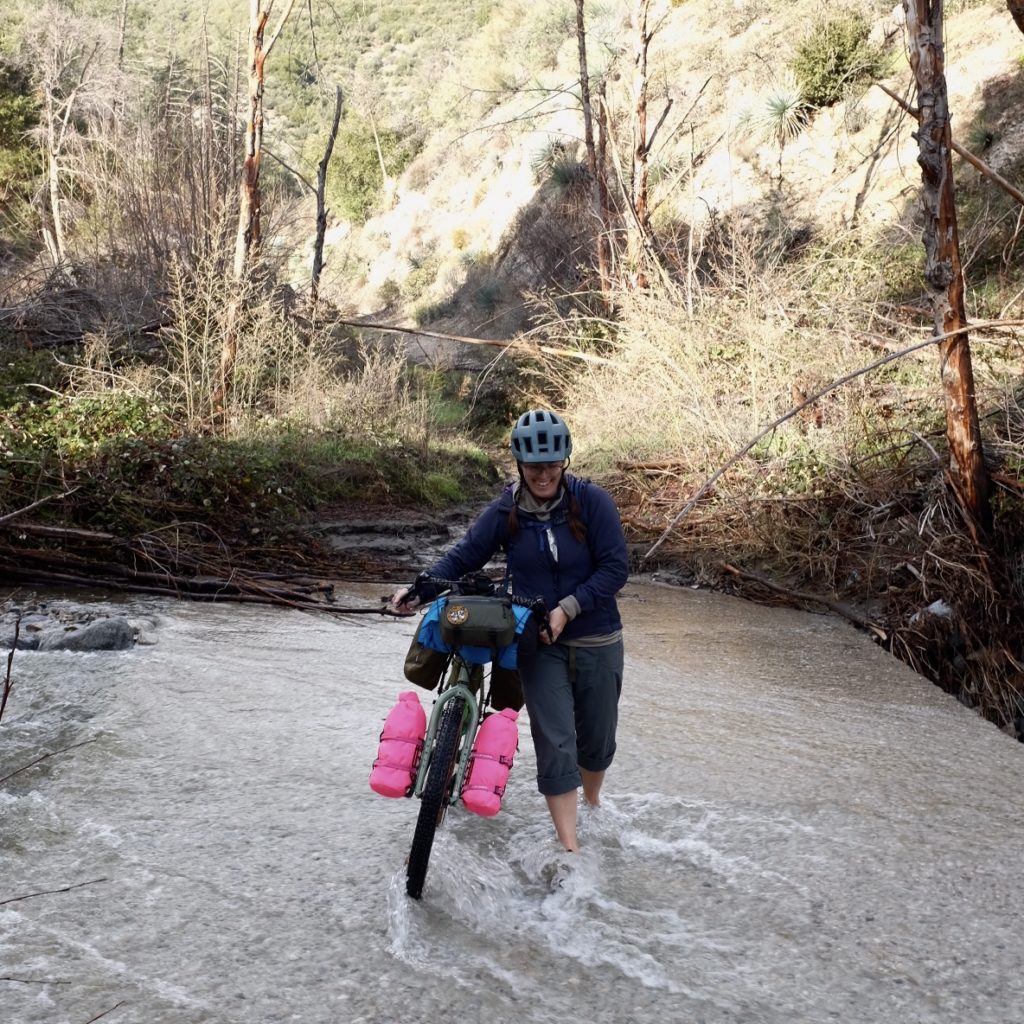

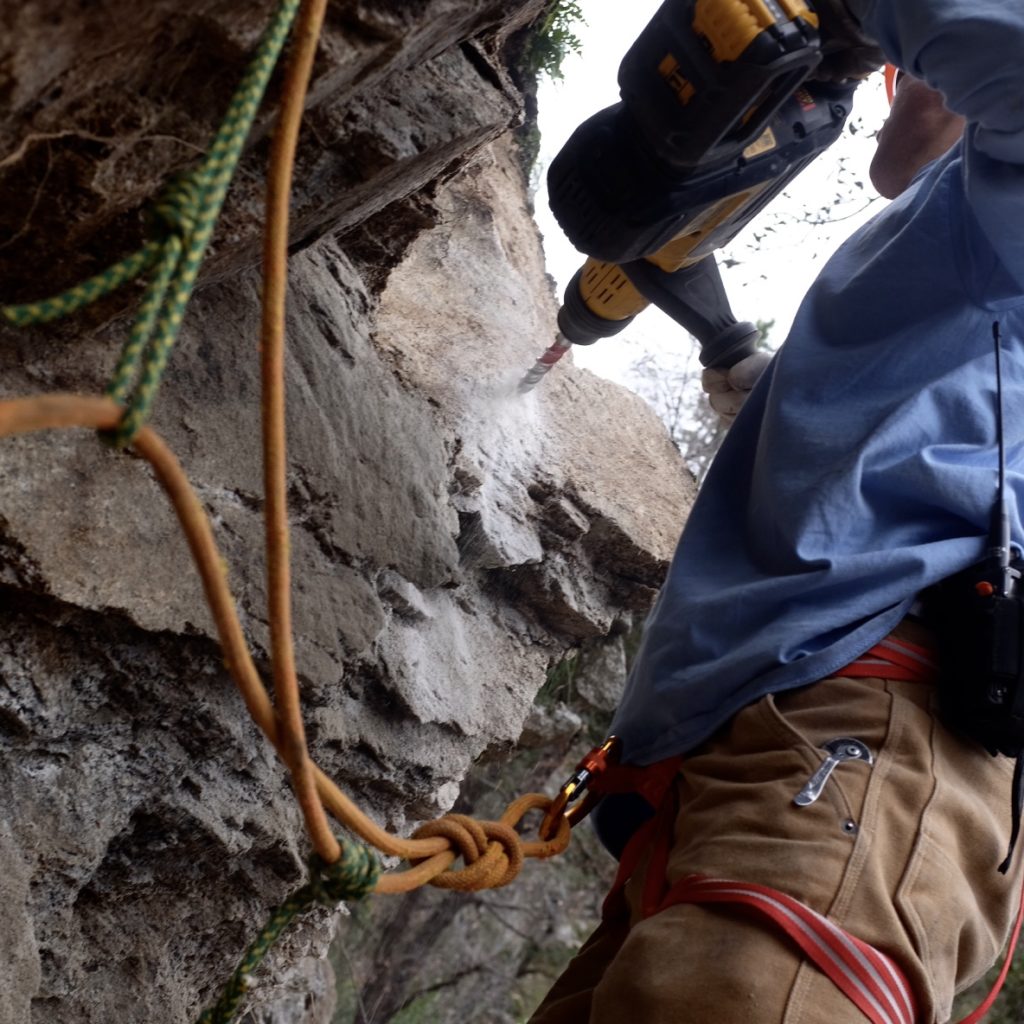
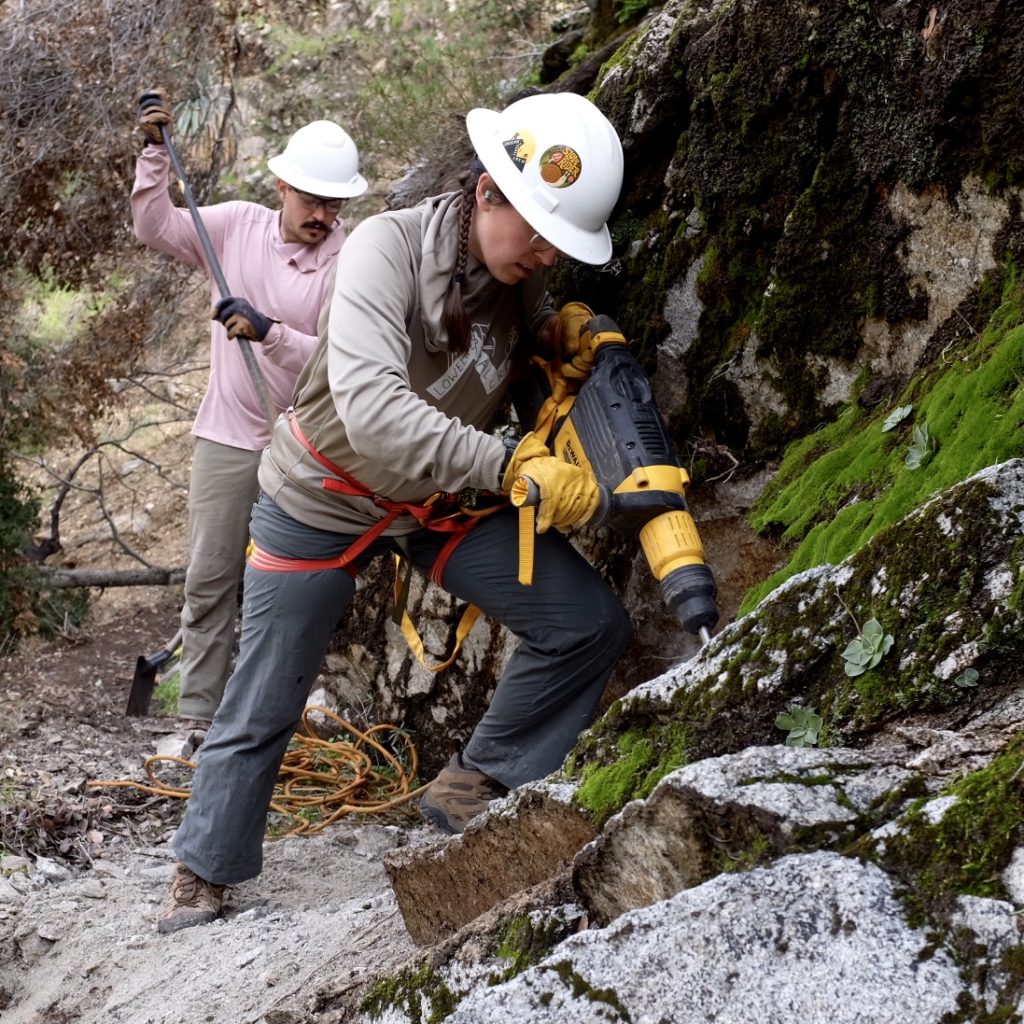
After another cycle of storms, we got an opportunity in February to get in and complete the abandoned cliff project. We needed to retrieve our stashed demolition hammer and rock-breaking tools for another project so we had to take the opportunity. We did a strike mission with two crew members and spent the entire day in early February to complete the section and restore safe passage.
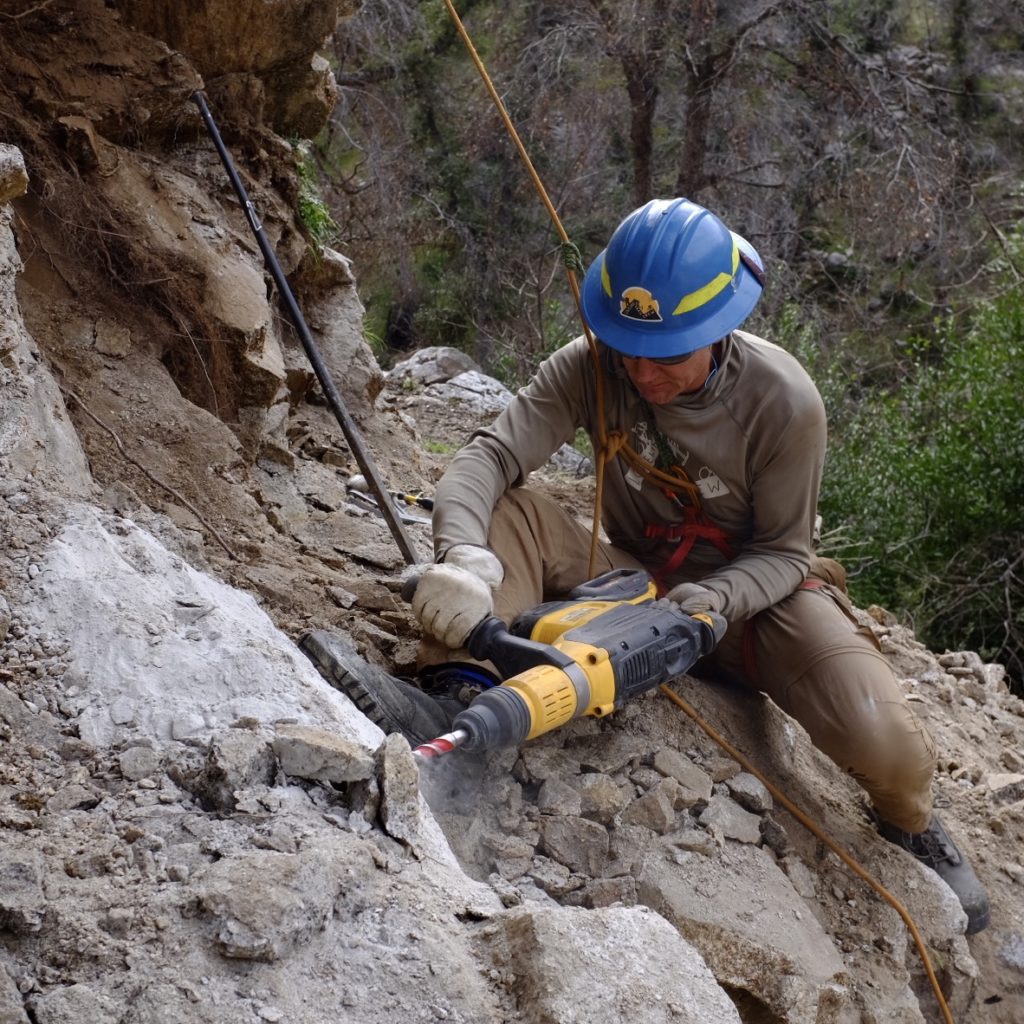

After concluding our work on the canyon bottom we planned to wrap up the project by working the upper stretch of the trail segment near Shortcut Saddle. We could access this side of the trail by car making it a perfect way to wrap up the restoration. This section suffered significantly less damage and has a much more sustainable design than the section along the canyon bottom. A series of unprecedented winter storms with abnormally low snow levels forced us to cancel our weekend volunteer outings two months in a row. Eventually, a mega-storm buried the trailhead at Shortcut Saddle in snow up to five or six feet deep. The Forest has also issued a Storm Response Plan twice that has intermittently shut down access for volunteers. Currently, the roads still need to have snow removed and access has been blocked for weeks. We plan to return when conditions allow.
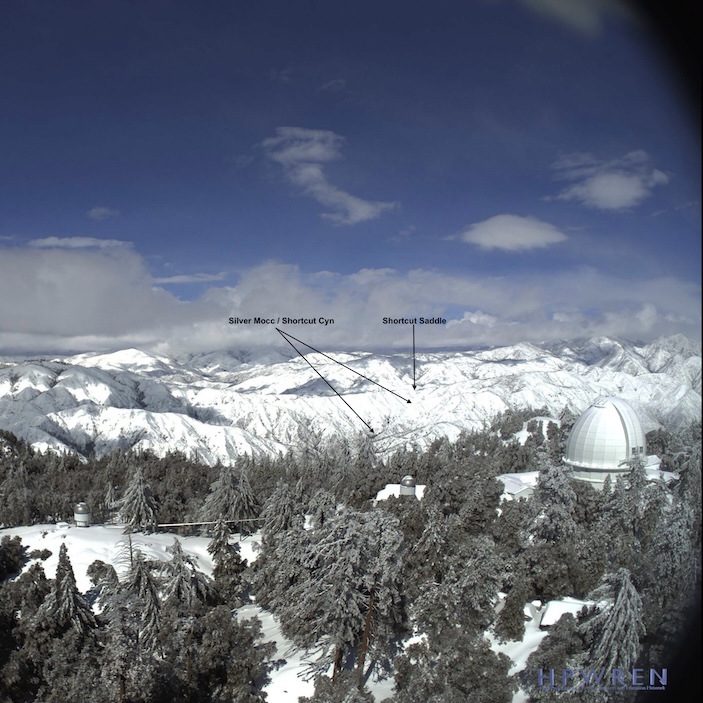
Shared Stewardship
We successfully coordinated shared stewardship to complete the next segment to the north on Silver Moccasin NRT from Shortcut Saddle to Vetter Mountain. We work alongside the Mount Wilson Bicycling Association (MWBA) on a few projects, and this was a perfect opportunity to team up with them to maximize our impact. They organized two days of work totaling 174 volunteer hours to restore this 3.5-mile stretch of the trail. By sharing scouting reports and regular communication, it was easy to coordinate complementary efforts with maximum results. We are happy to work with MWBA because their quality of work is up to our standards. Additionally, a small crew of sawyers from CORBA and the Angeles Mountain Bike Patrol handled clearing the downed trees on Silver Moccasin NRT within Charlton Flat.
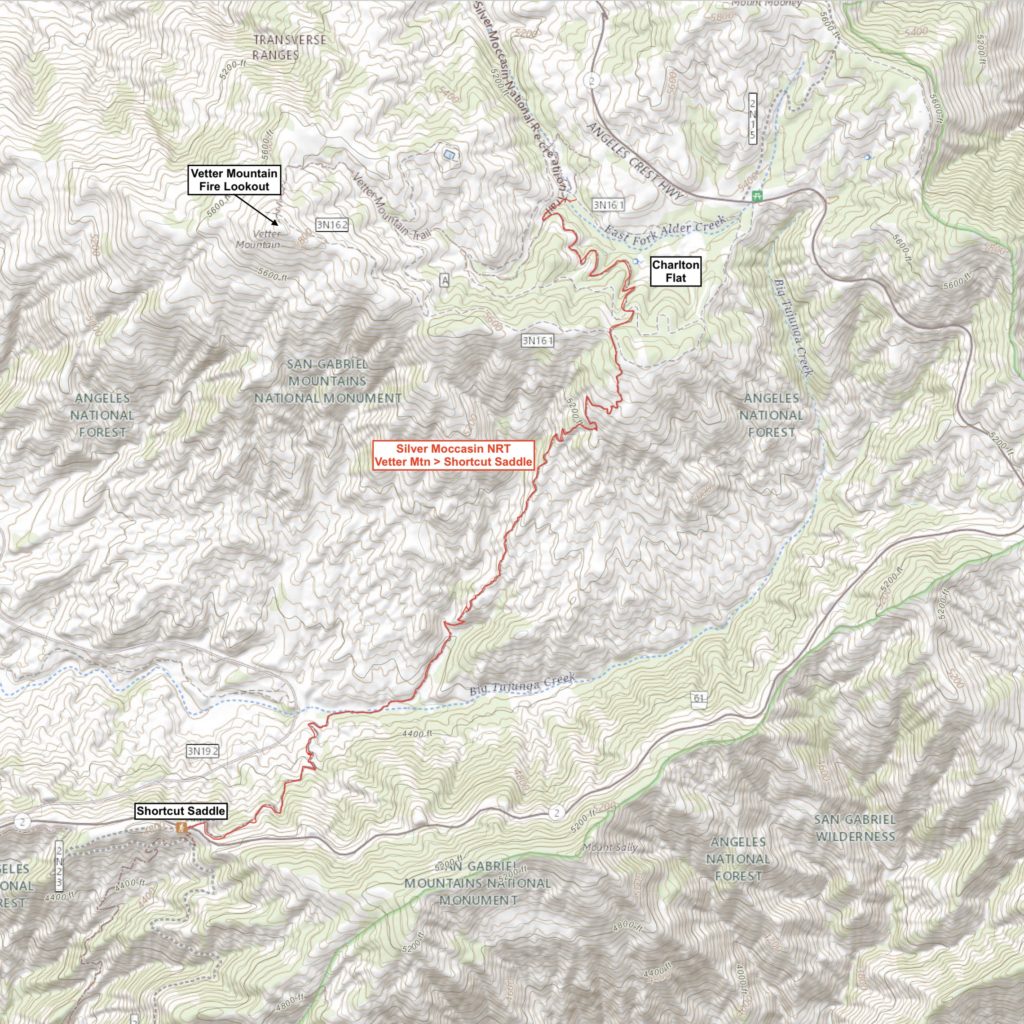
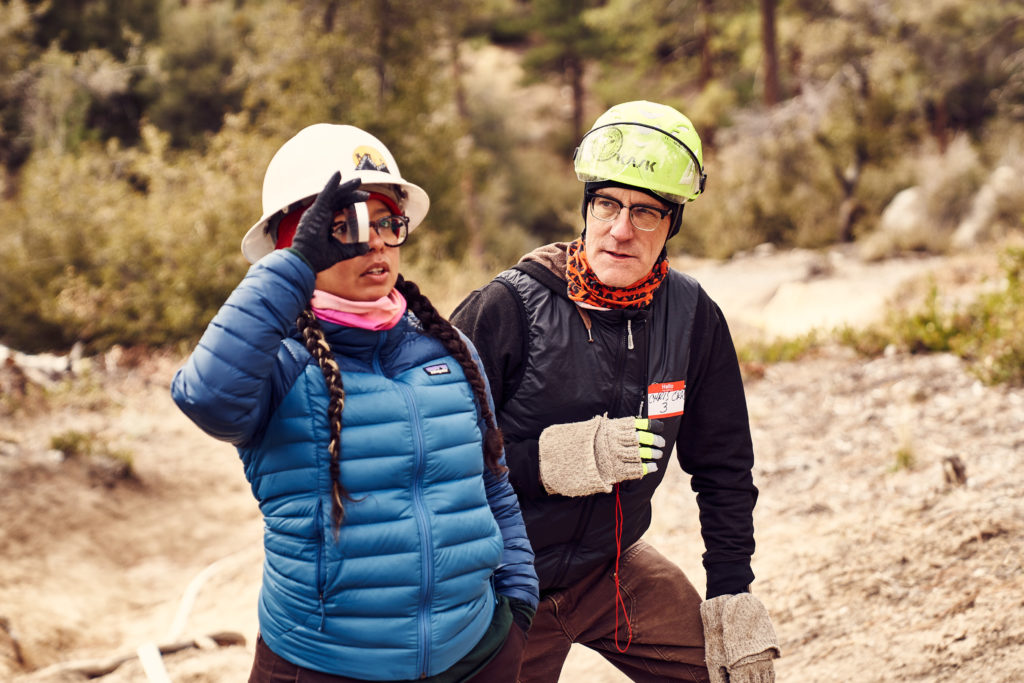
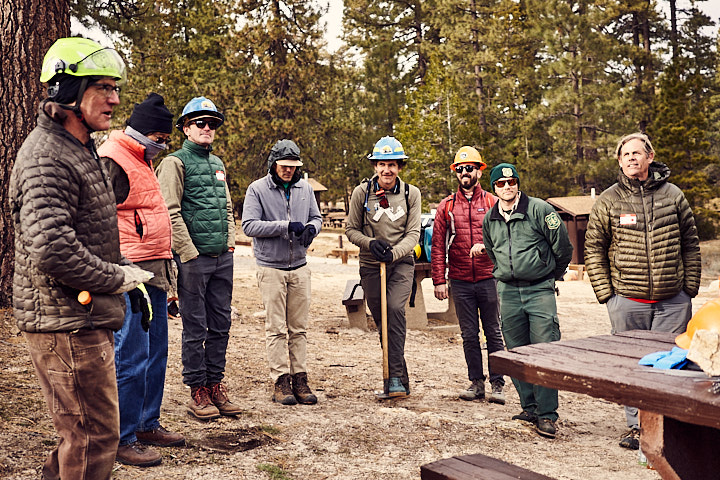
Project Wrap Up
Despite winter storms shutting us down for weeks, we still managed to spend 14 days over six months working to restore the Shortcut Canyon segment of Silver Moccasin NRT. We had 35 unique volunteers participate in the restoration for a total of 898 project hours. Due to campground capacity, our goal was to host 15 volunteers at each weekend campout. In addition to providing work plans, instruction, tools, and PPE, we provided volunteers with a backcountry feast to remember at each campout. We hand-pressed corn tortillas, made homemade tacos with a vegan option, and a homemade dessert. In the form of volunteer labor, Lowelifes final in-kind contribution was $30,623.

